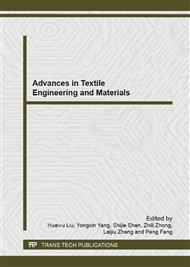[1]
P. Beardmore, C. F. Johnson: Compos Sci Technol. Vol. 26 (1986), p.251
Google Scholar
[2]
D. Hull: Compos Sci Technol. Vol. 40 (1991), p.377
Google Scholar
[3]
G. L. Farley, R. M. Jones: J Compos Mater. Vol. 26 (1992) p.37
Google Scholar
[4]
S. S. Cheon, D. G. Lee, K. S. Jeong: Compos Struct. Vol. 38 (1997) p.229
Google Scholar
[5]
H. Hamada, T. Nakatani, A. Nakai, V. Agaram: Compos Sci Technol. Vol. 59 (1999) p.1881
Google Scholar
[6]
T. S. Lim, D. G. Lee: Compos Struct. Vol. 56(2002) p.211
Google Scholar
[7]
A. K. Pickett, M. R. C. Fouinneteau: Compos Pt A-Appl Sci Manuf. Vol. 37 (2006) p.368
Google Scholar
[8]
S. J. Beard, F. K. Chang: J Thermoplast Compos Mater. Vol. 15 (2002) p.3
Google Scholar
[9]
S. J. Beard, F. K. Chang: Int J Crashworthiness Vol. 7 (2002) p.191
Google Scholar
[10]
S. J. Beard: Energy absorption of braided composite tubes (PhD thesis, Stanford University 2001)
Google Scholar
[11]
N. D. Flesher, F. K. Chang, N. R. Janapala: J Compos Mater. Vol. 45 (2011) p.853
Google Scholar
[12]
N. D. Flesher, F. K. Chang, N. R. Janapala, J. M. Starbuck: J Compos Mater. Vol. 45 (2011) p.867
Google Scholar
[13]
N. D. Flesher: Crash energy absorption of braided composite tubes (PhD thesis, Stanford University 2005)
Google Scholar
[14]
L. Catejon, A. Miravete, J. Cuartero: Mech Compos Mater Struct. Vol. 8 (2001) p.219
Google Scholar
[15]
C. J. McGregor, R. Vaziri, A. Poursartip, X. R. Xiao: Compos Pt A-Appl Sci Manuf. Vol. 38 (2007) p.2247
Google Scholar
[16]
C. J. McGregor, R. Vaziri, X. R. Xiao: Int J Impact Eng. Vol. 37 (2010) p.662
Google Scholar
[17]
X. R. Xiao, M. E. Botkin, N. L. Johnson: Thin-Walled Struct. Vol. 47 (2009) pp.740-749.
Google Scholar
[18]
X. R. Xiao, C. J. McGregor, R. Vaziri, A. Poursartip: Int J Impact Eng. Vol. 36 (2009) p.711
Google Scholar
[19]
R. A. Naik: J Compos Mater. Vol. 29 (1995) p.2334
Google Scholar
[20]
T. Z. Blazynski: Materials at high strain rates (Elsevier Applied Science, London 1987)
Google Scholar
[21]
P. Zhang, L. J. Gui, Z. J. Fan: J Reinf Plast Compos. Vol. 28 (2009) p. (1903)
Google Scholar
[22]
S. V. Thiruppukuzhi, C. T. Sun: Compos Sci Technol. Vol. 61 (2001) p.1
Google Scholar
[23]
A. Needleman: J Appl Mech. Vol. 54 (1987) p.525
Google Scholar
[24]
E. D. Reedy, F. J. Mello, T. R. Guess: J Compos Mater. Vol. 31 (1997) p.812
Google Scholar


